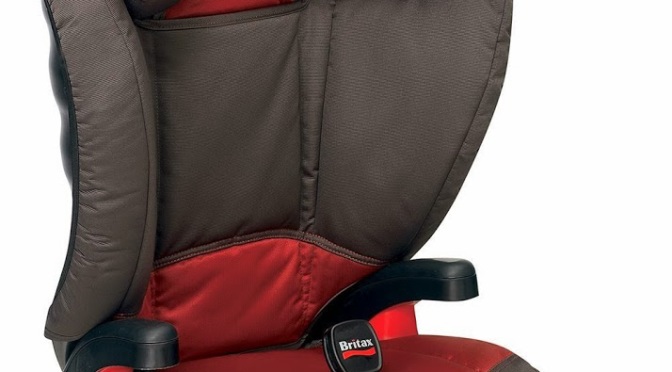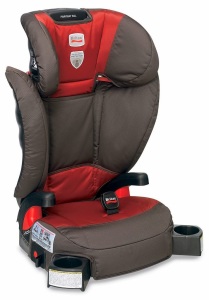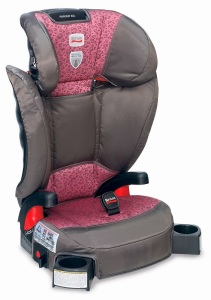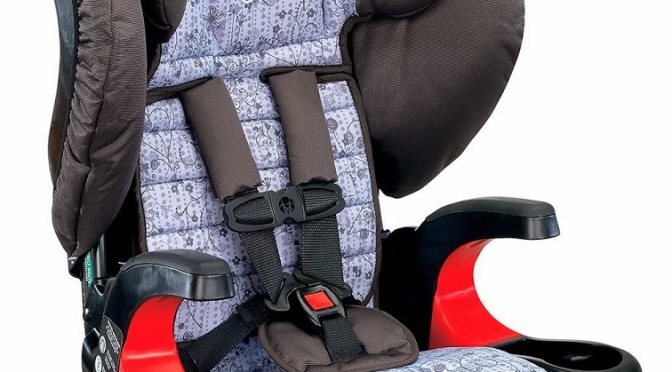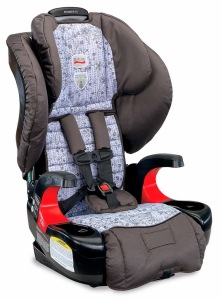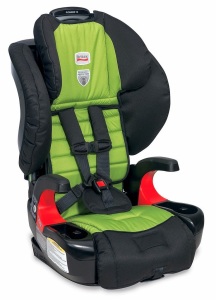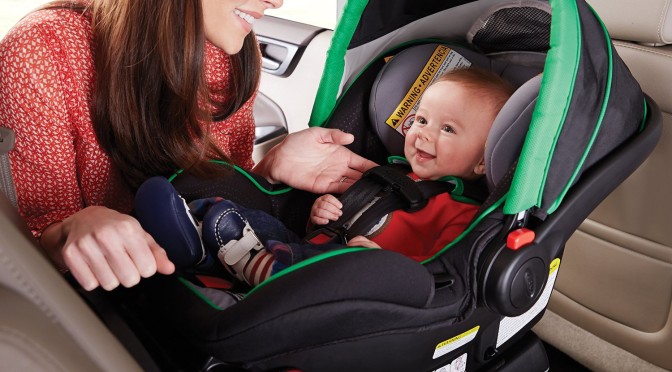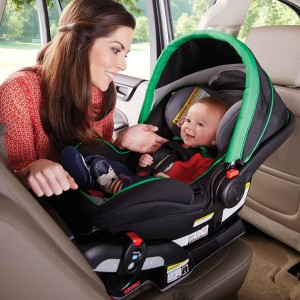The Graco 4Ever All-In-One Convertible Six-Position Car Seat is a seat that many of us in the car safety community have been waiting for for a long time; an attempt to create a seat that parents could use for a long, long time without compromising the safety of their children, with enough versatility to enable extended rear-facing and rapid, secure, installations. When I finally had the chance to pick one up and review it, I couldn’t pass up the opportunity.
2018 update: It’s been a few years since the 4Ever came out, but it remains one of the best all-in-one seats on the market. Nothing has changed in weight or height limits, but many more fabric options are available and the price has dropped significantly. I still recommend it heartily for parents looking for a “one and done” approach to car seats.
Graco 4Ever All-In-One – What’s the big deal?
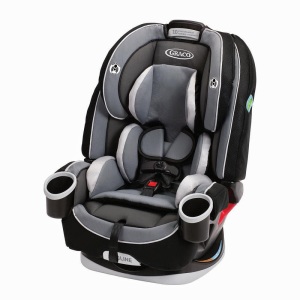 The Graco 4Ever All-In-One is Graco’s second attempt at a “forever” car seat, and in terms of functionality, this is one of the most impressive seats on the market from one of the most established names in the field. It’s a convertible “4 in 1” car seat, which means it can be used in several configurations, including as a rear-facing infant seat, a forward-facing seat, and as a high back and backless booster. The Graco 4Ever All-In-One is designed, per Graco, to be the only child car seat parents ever need. That’s an awfully big promise to make to parents. Is it worth it? Read on to find out!
The Graco 4Ever All-In-One is Graco’s second attempt at a “forever” car seat, and in terms of functionality, this is one of the most impressive seats on the market from one of the most established names in the field. It’s a convertible “4 in 1” car seat, which means it can be used in several configurations, including as a rear-facing infant seat, a forward-facing seat, and as a high back and backless booster. The Graco 4Ever All-In-One is designed, per Graco, to be the only child car seat parents ever need. That’s an awfully big promise to make to parents. Is it worth it? Read on to find out!
Buy the Graco 4Ever on Sale with Free Shipping at Amazon here.
Graco 4Ever Limits for Weight and Height
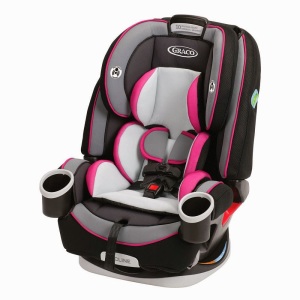 Rear-facing: 5-40 pounds. Your child’s head should not reach past 1″ below the top of the headrest. There is no given height limit for the child besides the 1″ rule. The shell extends to 27″, which is very impressive.
Rear-facing: 5-40 pounds. Your child’s head should not reach past 1″ below the top of the headrest. There is no given height limit for the child besides the 1″ rule. The shell extends to 27″, which is very impressive.
Forward-facing: 20-65 pounds, and between 27″ and 52″ in height. The tips of your child’s ears need to be below the top end of the head rest. Your child should be at least 1, and it’s recommended that s/he is at least 2. Of course, research into car safety indicates children should remain rear-facing for as long as possible (the average is 4 years in Sweden, which posts the lowest child fatality rate on Earth), and after rear-facing, the child should remain forward-facing as long as possible.
High back booster: 30-100 pounds, and between 38″ and 52″ in height. I always suggest children are at least 8 years old before switching from forward-facing into a booster.
Backless booster: 40-120 pounds, and between 40″ and 57″ in height. Most children will typically not be ready to move out of a booster until they are at least 4’9″, or 57″ tall, although the typical range is between 4’9″ and 5.’
Dimensions of the Graco 4Ever All-In-One
The seat is 20″ wide at its widest point and 24″ high. It is around 21.5″ long. It weighs 23 pounds and has a 10-year product life. The lowest harness position with the included infant insert is 6″, while the highest is 18″ and the highest booster position is 19.”
Using the Graco 4Ever All-In-One
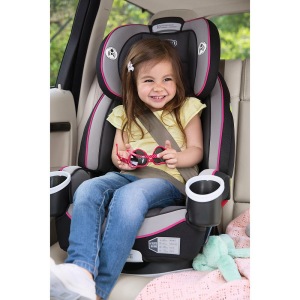 Many companies, including Graco, have tried making “forever” car seats for a while. Generally, all-in-one car seats tend to have strengths and weaknesses. For example, the Dionos are great RF and FF but aren’t very useful as boosters if you maximize their FF potentials. Similarly, the Foonf is great RF but can’t be used from birth, and also has a much narrower FF range than the Dionos. This is a good example of the ‘jack of all trades; master of none’ expression. However, when I had the chance to try out a 4Ever All-In-One, I couldn’t pass it up.
Many companies, including Graco, have tried making “forever” car seats for a while. Generally, all-in-one car seats tend to have strengths and weaknesses. For example, the Dionos are great RF and FF but aren’t very useful as boosters if you maximize their FF potentials. Similarly, the Foonf is great RF but can’t be used from birth, and also has a much narrower FF range than the Dionos. This is a good example of the ‘jack of all trades; master of none’ expression. However, when I had the chance to try out a 4Ever All-In-One, I couldn’t pass it up.
The seat arrives almost ready to use from the moment you unbox it, which was a welcome surprise. The cupholders are the only significant part that aren’t attached, and this was probably done to save a bit of space in the necessary box size. The manual includes instructions for attaching them, of course.
I’ve looked at the Smart Seat, Graco’s prior “all-in-one” seat, and it’s clear that Graco learned from the mistakes they made with it. This seat strikes me as a cross between a Snugride, a Size4Me, and a Nautilus, and a pleasant cross at that.
There are six recline positions available; the first three are used while rear-facing, while the second three are used while forward-facing. The fourth recline position is necessary when a forward-facing child weighs 20-40 pounds while the sixth is solely to be used as a booster. A recline indicator is available. There is also a no-thread harness present, which is always a blessing when making adjustments.
When used as a rear-facing seat, the Graco 4Ever All-In-One is rather compact; I was able to fit it in smaller sedans (e.g., Honda Civics) without too much trouble. It features an extending head restraint so the seat stays small by moving upwards instead of out and back. I like that.
The manual for the Graco 4Ever All-In-One is detailed and there is even a storage slot in the back of the seat for it. I like how the manual refers to the AAP recommendation of RF for kids under 2, although we know it should be far beyond that. The shell of this seat is tall enough to permit virtually all children to reach 40 pounds while rear-facing, which is good.
Something I’ve become more impressed about over the years are car seats that do well with smaller infants, as the best car seat is useless if your children can’t sit safely in it. The Size4Me is rated down to 4 pounds. I can verify that it works well with 4 pound newborns or preemies, although you need to remember that whether it fits a specific newborn or premature infant will depend on the child. Keep in mind that a number of convertible car seats don’t work well with newborns, so this is something to be lauded in the Size4Me.
4Ever-All-In-One LATCH and Seat Belt Installation = Easy
Installation of the Graco 4Ever All-In-One is rather basic; you can use lower LATCH anchors, which, of course, you tighten until you have 1″ or less of side to side movement, or you can use a seat belt installation, which I prefer. To do that, you simply store the LATCH connectors on their storage bars and run the seat belt through the belt path for rear-facing.
When rear-facing or forward-facing, keep in mind that you can only use LATCH anchors if the child weighs less than 42 pounds. This again makes it a good idea to just start with the seat belt instead of worrying about needing to switch later on. When forward-facing, Graco recommends you always use the tether, which is best practices for all seats when forward-facing.
Something I’d like Graco to change about the 4Ever All-In-One is their low minimum weight for the high back booster configuration of 30 pounds. There’s no reason for a 3-year old (e.g., a 30 lb child) to ever be in a high back booster; best practices suggests children shouldn’t enter these until they’re at least 8 years old. Hopefully Graco raises this minimum, especially given that the seat can easily fit older children (up to 65 pounds, in fact) while harnessed forward-facing.
High-Back Booster Mode = Useful
At any rate, once your child is too big for the harness (at 65 pounds and 52″ in height with an 18″ shoulder height), s/he should be able to fit for another year or more in high back booster mode, since the shoulder belt adjuster is another inch higher at 19.” By the way, I like that the harness can be stored within the seat while it is in booster mode; this makes it a lot harder to lose. There is a small storage compartment behind the seat pad that takes care of this. Little touches like that are part of what makes this seat so good.
Something else included by Graco is the capacity to use the lower anchors as well as a tether when the 4Ever All-In-One is used as a booster. However, remember that if you don’t set it up this way, that the buckle needs to be buckled every time it’s in your vehicle, regardless of whether a child is inside it or not. That keeps it from turning into a deadly projectile in a collision.
Finally, the 4Ever All-In-One can be used in a backless booster mode if your child outgrows it in high back booster mode. Keep in mind that your vehicle needs to offer head support if you wish to use it this way, and that it should only be considered as an option if your child is capable of sitting correctly 100% of the time, including while asleep. Of course, if your child isn’t ready for that, s/he’s not ready for a booster to begin with; try the 5-step guide to be sure.
Buy the Graco 4Ever on Sale with Free Shipping at Amazon here.
Why Buy the Graco 4Ever All-In-One?
This is the meat and potatoes of this car seat. The Graco 4Ever All-In-One is one of several seats in the United States that allow you to rear-face a child for up to 40 pounds. This isn’t as good as it gets anymore, but it’s still decent. Every pound is precious, as the longer you rear-face, the safer your child is. In the US, parents tend to turn their children around into the line of fire at 1. In Sweden, this typically isn’t done until 4. Children in Sweden are far less likely to die in car crashes than children in the US. It makes that much of a difference. This alone is reason enough to buy the Graco 4Ever All-In-One.
Let’s be honest: the Graco 4Ever All-In-One is not going to win any awards for uber-long RF weight among its fellow convertibles. However, it’s designed to fill a niche, and in that respect, it does so well. It’s a great seat for parents who want a seat that can realistically take their children from birth to booster age and in some cases to the point where they no longer need a car seat at all. This, for me, is the biggest reason to buy the Graco 4Ever All-In-One.
However, there are other reasons to consider. It’s also a good seat for parents of tall, skinny kids, and it also works well if you don’t have a child who’s high in the weight percentiles, yet still want him or her to rear-face until kindergarten. It’s also reasonably skinny, so you will be able to fit three across, whether with this or with other car seats, in most vehicles that are mid-sized or larger. I also love the fact that it has a 10-year product life in all settings, which beats even the Dionos with their 8-year harnessed lives.
What are the biggest disadvantages of the 4Ever All-In-One?
The biggest strike against the Graco 4Ever All-In-One is the fact that there are seats that allow you to RF longer by weight. However, this seat isn’t meant to lead the class there; what it’s meant to do is to simplify the process of safely transporting a child in a vehicle for years to come. This is the best thought out “forever” seat I have come across, and for parents who are looking for a seat to stay with their child for a decade, there is nothing better out there right now. In that sense, it’s the best seat I’ve reviewed.
I’m looking forward to more manufacturers following their market, as it’s quite possible that this might be the only car seat a child ever needs, especially if you have a taller child who reaches the 4’9″ to 5 foot range where children typically no longer need boosters by age 10.
I recommend the Graco 4Ever All-In-One wholeheartedly. You can buy the Graco 4Ever All-In-One here in a range of colors.
 If you find my information on best practices in car and car seat safety helpful, you can do your shopping through this Amazon link. Canadians can shop here for Canadian purchases. Have a question or want to discuss best practices? Join us in the forums!
If you find my information on best practices in car and car seat safety helpful, you can do your shopping through this Amazon link. Canadians can shop here for Canadian purchases. Have a question or want to discuss best practices? Join us in the forums!
 Who:
Who:

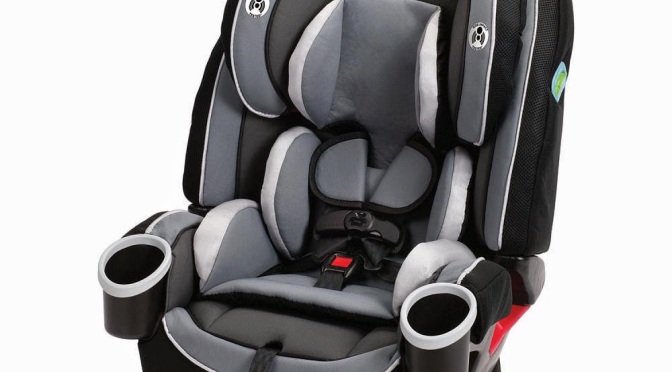



 If you find my information on best practices in car and car seat safety helpful, you can
If you find my information on best practices in car and car seat safety helpful, you can 